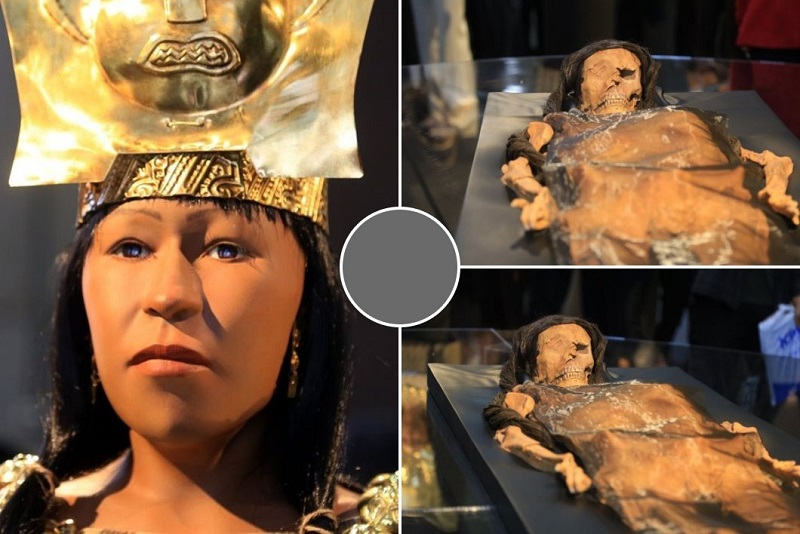Lady Cao was not just one of many mummies archaeologists have unearthed in various parts of the world. Discoveries of her remains re-wrote ancient history and gave us a much better understanding of the Moche culture.

The Moche flourished and ruled the northern coast of Peru before the Incas, between the first and eighth centuries, at the same time the Mayas thrived in Mexico and Central America. They dominated the desert through a complex irrigation system, built adobe pyramids, and, like many ancient cultures, used religion to unify society.
In 2006, archaeologists discovered a female Moche mummy at the archeological site El Brujo, which is located about 45 km north of Trujillo in the La Libertad Region of Peru. She became known as lady Cao. It was one of the most significant archeological discoveries relating to the Moche.The discovery of her splendid burial shattered scientists’ notions about the Moche, which until recently had been perceived as a society ruled by male warriors.

Examinations of the ancient mummy revealed Lady Cao was in her mid-twenties when she died about 450 CE. The cause of her death was most likely complications due to pregnancy or childbirth.This royal tomb, the eighth discovered in 25 years, is believed to have belonged to a Moche priestess buried 1,200 years ago. The great number of artifacts and the complexity of the burial reveal the power and influence this woman wielded in life. Courtesy of Luis Castillo
The Lady of Cao’s mummy, which was found at the archaeological site Huaca El Brujo, a grand pyramid of the ancient Moche pre-hispanic culture, is seen at the Ministry of Culture in Lima, Peru July 4, 2017.

She had a diadem of gold on her head and wore a large V-shaped crown with the image of a puma in the center and a necklace with large beads, each bearing the same feline face. She had several symbolic tattoos.On her arms and feet, scientists discovered snake and animal tattoos.
Other tattoos on her body included spiders, the tree of life, star-like figures, all of which were considered sacred elements and which also appear on the friezes of the larger temples in the El Brujo archaeological complex.Using sophisticated 3D technology, scientists later reconstructed her face and by doing so she became more alive.
 Today, most scientists think that Lady Cao could have been a priestess or even a Moche ruler who has governed in the Chicama Valley.
Today, most scientists think that Lady Cao could have been a priestess or even a Moche ruler who has governed in the Chicama Valley.
Until recently, it was believed that the Moche had been as a society ruled by male warriors, but this ᴀssumption turned out to be completely wrong.The discovery of Lady Cao showed that women held a high rank in the Moche culture. The Moche civilization had no written language and the silent remains of Lady Cao spoke to us, revealing what her society really was like.






